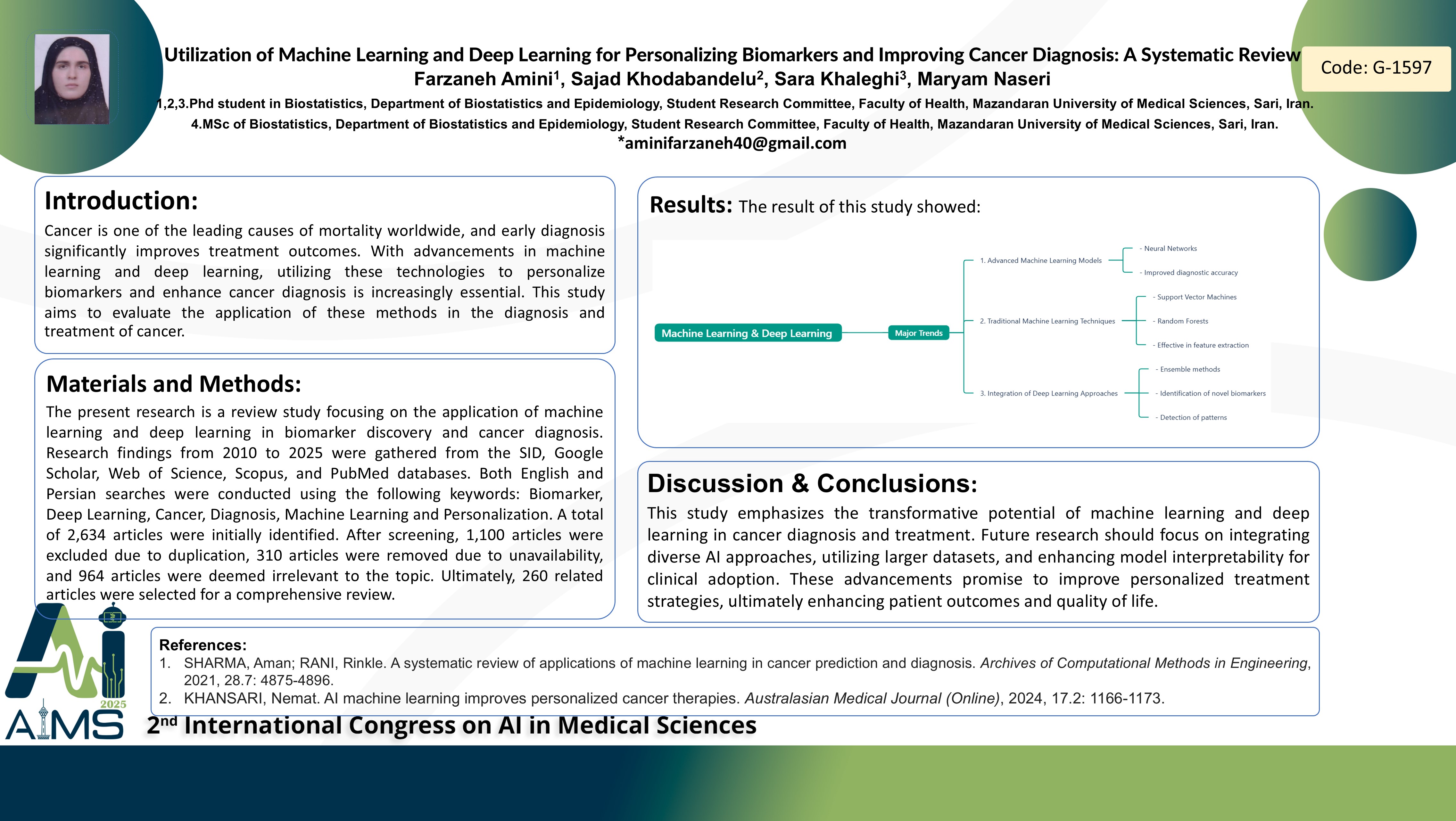استفاده از یادگیری ماشینی و یادگیری عمیق برای شخصی سازی نشانگرهای زیستی و بهبود تشخیص سرطان: مروری سیستماتیک
کد: G-1597
نویسندگان: Farzaneh Amini * ℗, Sajad Khodabandelu, Sara Khaleghi, Maryam Naseri
زمان بندی: زمان بندی نشده!
برچسب: تشخیص و درمان سرطان
دانلود: دانلود پوستر
خلاصه مقاله:
خلاصه مقاله
Background and aims: Cancer is one of the leading causes of mortality worldwide, and early diagnosis significantly improves treatment outcomes. With advancements in machine learning and deep learning, utilizing these technologies to personalize biomarkers and enhance cancer diagnosis is increasingly essential. This study aims to evaluate the application of these methods in the diagnosis and treatment of cancer. Method: The present research is a review study focusing on the application of machine learning and deep learning in biomarker discovery and cancer diagnosis. Research findings from 2010 to 2025 were gathered from the SID, Google Scholar, Web of Science, Scopus, and PubMed databases. Both English and Persian searches were conducted using the following keywords: Biomarker, Deep Learning, Cancer, Diagnosis, Machine Learning and Personalization. A total of 2,634 articles were initially identified. After screening, 1,100 articles were excluded due to duplication, 310 articles were removed due to unavailability, and 964 articles were deemed irrelevant to the topic. Ultimately, 260 related articles were selected for a comprehensive review. Results: The review identified three major trends in the application of machine learning and deep learning for cancer diagnosis and biomarker discovery. First, advanced machine learning models, particularly neural networks, demonstrated significant improvements in diagnostic accuracy across various cancer types. Second, traditional machine learning techniques, such as Support Vector Machines and Random Forests, proved effective in feature extraction and data analysis, offering interpretable results that support clinical decision-making. Third, the integration of deep learning approaches, including ensemble methods and transfer learning, enabled the identification of novel biomarkers and patterns that were not detectable through conventional methods. Notably, attention mechanisms enhanced model interpretability by focusing on critical features, leading to more accurate classifications. These findings highlight the potential of AI-driven approaches to revolutionize cancer diagnosis and treatment. Conclusion: This study emphasizes the transformative potential of machine learning and deep learning in cancer diagnosis and treatment. Future research should focus on integrating diverse AI approaches, utilizing larger datasets, and enhancing model interpretability for clinical adoption. These advancements promise to improve personalized treatment strategies, ultimately enhancing patient outcomes and quality of life.
کلمات کلیدی
Biomarker, Cancer, Deep Learning, Machine Learning
